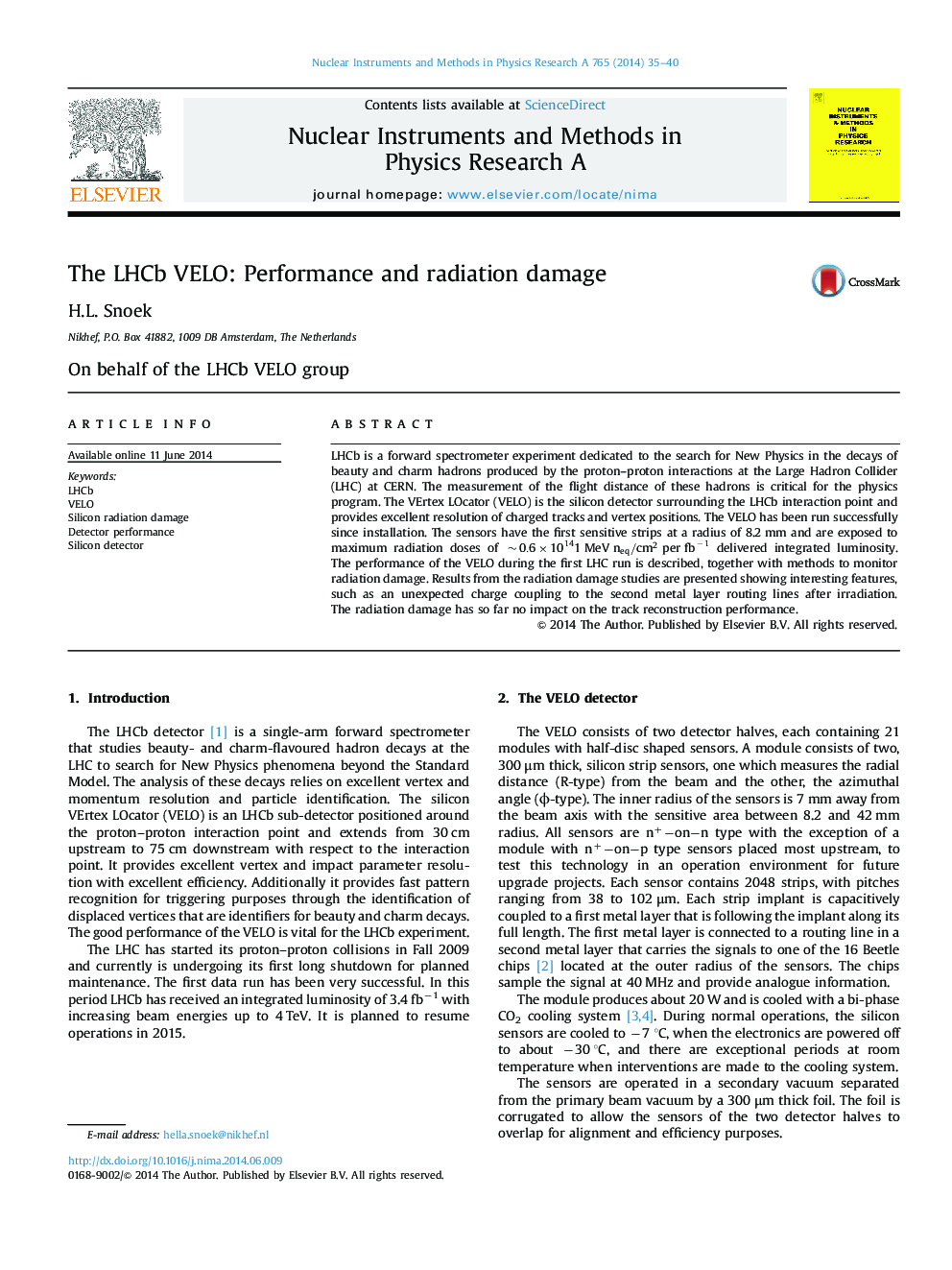| Article ID | Journal | Published Year | Pages | File Type |
|---|---|---|---|---|
| 8175214 | Nuclear Instruments and Methods in Physics Research Section A: Accelerators, Spectrometers, Detectors and Associated Equipment | 2014 | 6 Pages |
Abstract
LHCb is a forward spectrometer experiment dedicated to the search for New Physics in the decays of beauty and charm hadrons produced by the proton-proton interactions at the Large Hadron Collider (LHC) at CERN. The measurement of the flight distance of these hadrons is critical for the physics program. The VErtex LOcator (VELO) is the silicon detector surrounding the LHCb interaction point and provides excellent resolution of charged tracks and vertex positions. The VELO has been run successfully since installation. The sensors have the first sensitive strips at a radius of 8.2Â mm and are exposed to maximum radiation doses of ~0.6Ã10141MeVneq/cm2perfbâ1 delivered integrated luminosity. The performance of the VELO during the first LHC run is described, together with methods to monitor radiation damage. Results from the radiation damage studies are presented showing interesting features, such as an unexpected charge coupling to the second metal layer routing lines after irradiation. The radiation damage has so far no impact on the track reconstruction performance.
Related Topics
Physical Sciences and Engineering
Physics and Astronomy
Instrumentation
Authors
H.L. Snoek, On behalf of the LHCb VELO group On behalf of the LHCb VELO group,
